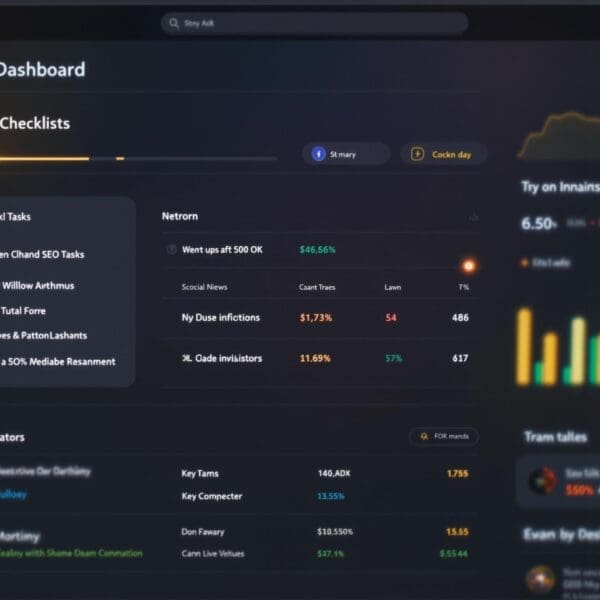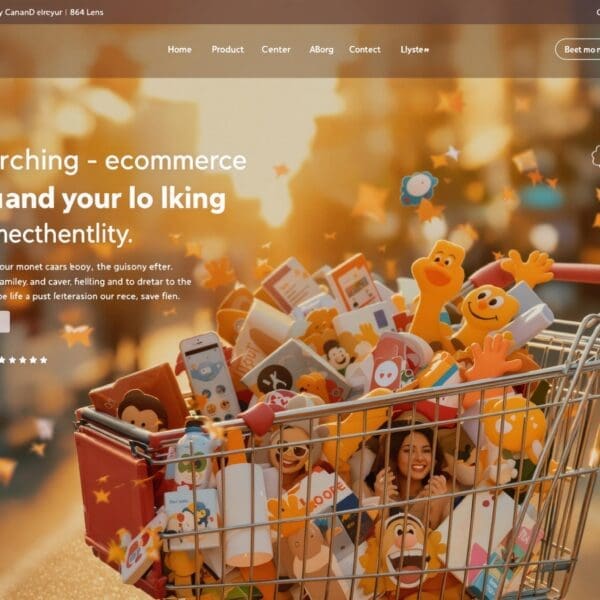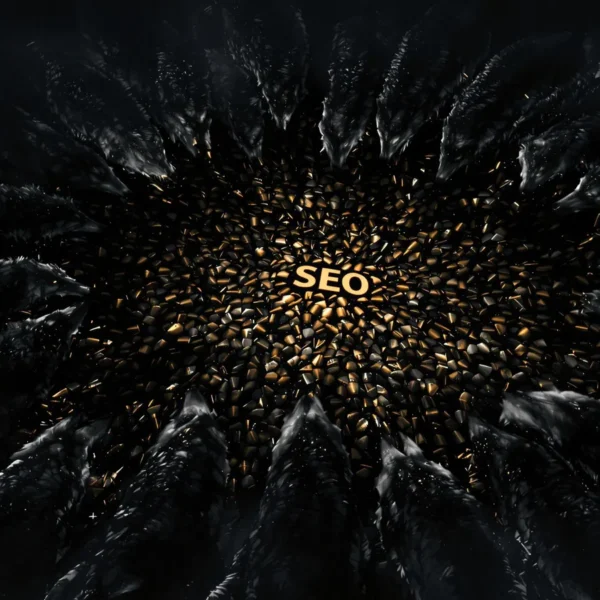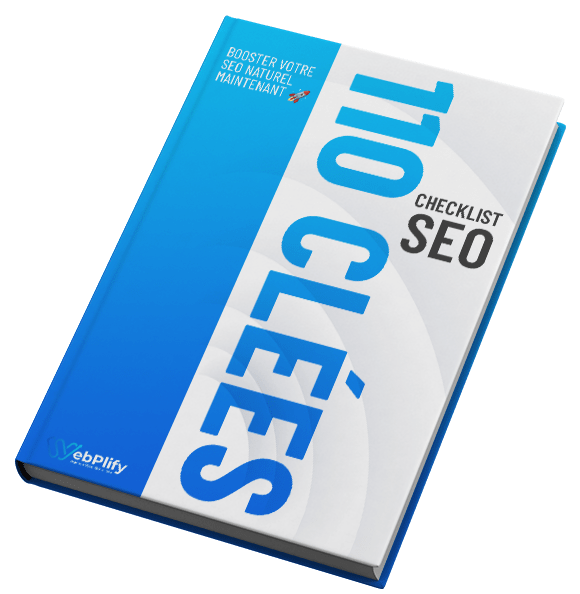✅ 7 key points to remember to dominate SERPs with enriched results
- Enriched results boost click-through rate (CTR) ➤ With visual elements such as stars, prices or FAQs, you’ll attract more attention in Google and increase your CTR by up to +40%.
- The JSON-LD format is the recommended method ➤ Easy to integrate, clean and compatible with all websites, it allows you to structure your data without modifying your HTML content.
- Certain types of markers are essential depending on your activity
➤ Examples:
“Product” and “AggregateRating” for e-commerce
“LocalBusiness” for local businesses
“FAQPage” and “HowTo” for informative or tutorial sites
- Implementing structured data is simple with the right tools➤Use free tools like Google Rich Results Test, Markup Helper, or plugins like Rank Math / Yoast SEO for WordPress.
- Well-structured content makes it easier to enrich ➤ Remember to use H2s for FAQ questions, bulleted lists for steps, and to clearly display important info (price, availability…).
- A competitive audit often reveals opportunities ➤ If your competitors aren’t using certain markup (FAQs, reviews, events), you have a quick advantage to seize to stand out visually in Google.
- Enriched results are a strategic and measurable SEO lever ➤ More visibility, more clicks, more conversions. A case study shows up to +35% clicks and +28% impressions in 6 months after implementation.
Are you struggling to stand out in Google’s search results, drowned out by the competition? Rich Snippets are a strategic opportunity to attract the attention of Internet users and optimize your SEO. Find out how to leverage structured data, JSON-LD markup and Google Search Console-validated best practices to boost your visibility on the SERP and convert more clicks with visually advantageous snippets.
Table of contents
ToggleWhat is a Rich Snippet?
Definition and fundamental principles
Rich results are one of the fundamentals of SEO, and are additional visual elements displayed by Google in search results pages (SERPs). They include structured data such as reviews, prices or dates, extracted via Schema.org markup. Their purpose is to provide an immediate overview of a page’s content, making it easier for users to make their choice. These elements enhance the search experience by providing contextual information before the click, while boosting website visibility.
By integrating structured data in formats such as JSON-LD, rich results provide Google with precise information about the content of a page. According to the Google Search Central documentation, this markup optimizes content recognition by search engines. This process relies on a standardized syntax, integrated into the HTML code, to transform raw data into elements that can be used by Google’s algorithm.

Common types of enriched results
Enriched results cover a variety of formats, including reviews (stars), recipes (ingredients, cooking times), events (dates, locations) and FAQs. Each type meets specific needs: reviews build trust for e-tailers, recipes attract cooking enthusiasts, and events facilitate local discovery. These formats increase the probability of clicks (CTR) by making the results more attractive.
For e-commerce sites, reviews and prices are indispensable, while recipes benefit culinary sites. Local businesses benefit from “LocalBusiness” markup to display on Google Maps. HowTo” or “Article” formats attract readers looking for detailed explanations. The choice depends on the sector and the nature of the content, with priority given to valid structured data to maximize efficiency.
The difference between enriched results and optimized extracts
| Criteria | Rich Snippets | Featured Snippets |
|---|---|---|
| Position in SERP | Integrates with classic search results, enriching the display | Appears at the top of results, before organic results (Position 0) |
| Display format | Adds visual elements to a standard result (stars, prices, dates) | Presents a separate block with a direct answer to a question |
| Information source | Uses structured tagged data (schema.org) | Automatically extracts visible content without specific markup |
| Type of information displayed | Rating stars, prices, dates, ingredients, preparation time | Text summary answering a question, or step-by-step list |
| Main objective | Improve click-through rate (CTR) with a more attractive display | Provide an immediate response to the surfer even before the click |
| Impact on traffic | Encourages clicks thanks to the visual appeal of the result | Can reduce traffic if response is sufficient without clicking |
| Implementation method | Requires technical addition of JSON-LD structured data | Optimizable through clear structuring of content (questions/answers, lists) |
Rich Snippets and Featured Snippets play distinct roles in SERPs. Rich Snippets enrich standard results with structured data, while Featured Snippets aim to respond directly to queries. According to an analysis by Journal du Net (JDN), Rich Snippets are suitable for sites wishing to increase their CTR, while Featured Snippets target maximum visibility in Position 0. The choice depends on the objectives: visual appeal or immediate response.
Structured data: the basis for enriched results
Structured data are standardized formats that organize information according to precise rules, making it easier for algorithms to interpret. They are based on schemas such as Schema.org, enabling Google to qualify the content of a page. These mark-ups transform raw data into usable elements, increasing the chances of appearing in enriched results.
- JSON-LD: Format recommended by Google for its flexibility and ease of integration into HTML code.
- Microdata: Old format integrated directly into HTML, more complex to maintain
- RDFa: W3C standard for HTML5/XHTML pages, similar to Microdata but with a different syntax
- Combination options: Google allows formats to be mixed on the same page for greater flexibility
The JSON-LD format, favored by Google, simplifies the addition of structured data without modifying the HTML of the page. It is based on JavaScript code inserted in the header, using standardized schemas such as Schema.org. This method is particularly well suited to dynamic sites, as it enables data to be updated centrally. For static sites, tools like Google Markup Helper help generate valid markup, reducing the risk of technical errors.
Why do enriched results boost SEO?
Improved click-through rate (CTR)
Enriched results attract more attention thanks to their distinctive visual format. By displaying elements such as star ratings or prices, they stand out from conventional results and encourage click-through. According to a benchmark study, CTR can increase by 58%, compared with 41% for standard results. This improvement is due to the presence of additional information that directly responds to users’ expectations, even before they click.
Concrete data demonstrate the effectiveness of rich snippets in different sectors. A link positioned in second place with a rich snippet achieves a CTR of 61%, compared with 35% without enrichment. The best-performing formats include customer reviews, detailed recipes and job offers. E-commerce sites in particular benefit from this increased visibility, with an average click-through rate 17% higher than their non-optimized competitors.
Visibility and authority in the SERP
Enhanced results reinforce a site’s credibility by occupying more visual space in search results. Star ratings or offer summaries are eye-catching and convey a sense of reliability. This enhanced presence helps establish an authoritative image, especially when the structured data comes from reliable, up-to-date sources.
By occupying more space in the SERP, rich snippets stand out from traditional results and capture a greater share of users’ attention. A site displaying clear opening hours or delivery charges in the SERP stands out from its competitors. This strategic visibility not only increases organic traffic, but also positions the company as a reference in its field among the results pages.
The competitive impact is significant when less than 40% of industry players are already using enriched results. An audit often reveals untapped opportunities, such as the absence of FAQPage or AggregateRating tagging among direct competitors. The strategic implementation of these formats represents a rapid lever for outperforming the competition in search results.
Analysis of the space occupied by enriched results and their impact on visibility
Enriched results visually occupy more space in the SERP, thanks to elements such as star ratings, images or interactive summaries. This visual density increases the likelihood of being clicked, especially on queries with strong transactional intent. An e-commerce site displaying its customer reviews or prices in the SERP attracts more attention than a competitor limited to the title and meta-description.
To maximize this visual space, several formats stand out for their efficiency. FAQPage markup enables multiple questions and answers to be displayed in a single result, while the Product type increases the surface area occupied with price, availability and key features. The implementation of these formats, combined with precise structured data, enhances visual impact and improves overall SEO performance.
Competitive advantages over less optimized competitors
Companies that anticipate the adoption of enriched results gain a strategic advantage over their competitors. Increased CTR and better SERP occupancy translate into a higher flow of qualified traffic. A competitive audit often reveals easily exploitable shortcomings, such as the absence of tagging for reviews or events. These opportunities offer rapid leverage to increase your share of visibility.
When competitors have already adopted these practices, differentiation is based on the quality and completeness of the markup. Adding complementary formats, such as Product + FAQPage on a product page, maximizes impact in the SERPs. Regular monitoring of available formats enables us to anticipate new enrichment opportunities and maintain a technical-marketing edge.
Types of enriched results most relevant to SMEs and service sites
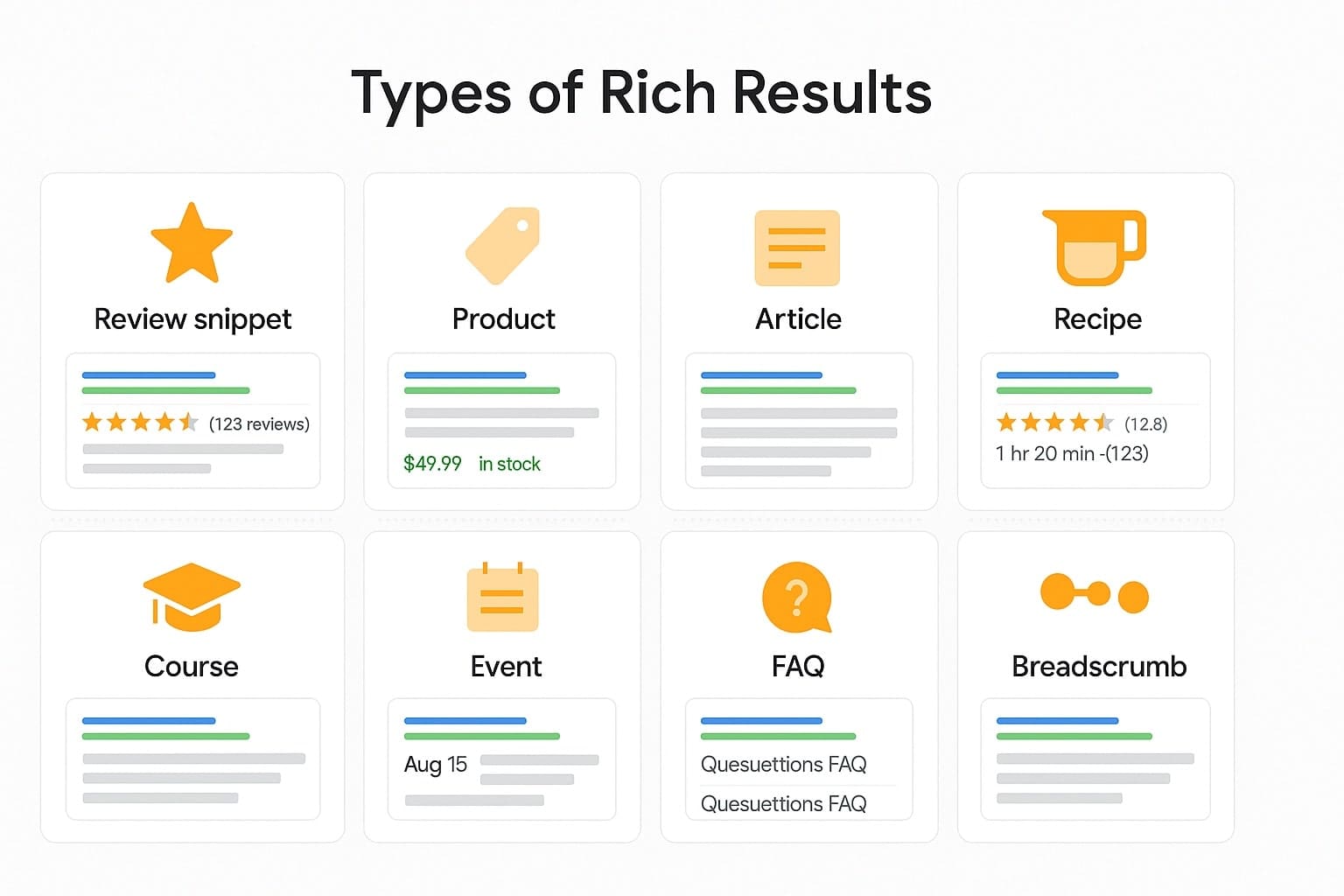
⭐ Opinions / Ratings (AggregateRating)
AggregateRating tags display stars and ratings below search results, reinforcing a site’s credibility. Users place more trust in pages with visible reviews, which increases the click-through rate (CTR) by 20 to 35%, depending on the sector.
To implement AggregateRating, use the schema schema .org/AggregateRating with JSON-LD. Tools such as Google Markup Helper or Merkle Schema Markup Generator make it easy to create valid markup. Make sure reviews are recent and reflect real user experience to avoid review spam penalties.
To collect reviews, integrate forms on your site or send out post-purchase surveys. Respond to negative reviews in a professional manner to preserve your reputation and improve customer interactions.
💼 Local business sheet (LocalBusiness)
The LocalBusiness format displays information such as address, opening hours and telephone number directly in the SERPs. This makes it easier to find local businesses, and improves CTR by 15-25% for service sites.
To integrate this markup, use schema.org/LocalBusiness with JSON-LD. Include precise data such as location, contact details and business categories. This boosts visibility on Google Maps and local searches, like for a hair salon or restaurant.
To optimize this format, regularly synchronize data with Google My Business. This ensures theaccuracy of information and userconfidence, especially for queries such as “store hours” or “nearby services”.
📅 Events
Event tagging displays details such as dates, locations and event descriptions in SERPs. This attracts users looking for local activities, increasing traffic by 10-20% for event organizers.
schema.org/Event to structure your data. Include elements such as title, date, location and link to the event. Festival and conference sites benefit particularly from this, attracting visitors looking for cultural or professional programs.
📚 FAQ (FAQPage)
The FAQPage format displays questions and answers directly in search results. This captures the attention of users looking for quick answers, increasing CTR by 15-20% for informative sites.
To implement FAQPage, use the JSON-LD schema with schema.org/FAQPage. Structure each question-answer pair clearly and concisely. Service sites (insurance, health) take advantage of this by answering queries such as “how to take out a policy” or “emergency care”.
🍽️ Products or services (Product)
Product tagging displays information such as price, availability and technical specifications in SERPs. This attracts users in the purchasing phase, increasing CTR by 18% to 30% for e-tailers.
Use schema.org/Product and JSON-LD to structure data. Include elements such as title, description, price and images. Online sales sites benefit by distinguishing themselves from competitors with visual details such as promotions or available stock.
🧠 Blog posts (Article, HowTo, Breadcrumb)
Article, HowTo and Breadcrumb formats structure editorial content and how-to guides. This improves the readability of results, attracting visitors looking for tutorials or news.
For articles, use schema.org/Article with JSON-LD. For tutorials, use HowTo with detailed steps. BreadcrumbLists clarify navigation, enhancing both user experience and SEO.
How to implement structured data on your website
The JSON-LD format recommended by Google
Google favors JSON-LD and reliable implementation, unlike Microdata, which integrates data directly into HTML, complicating maintenance.
For WordPress sites, use plugins like Rank Math or Yoast SEO that automatically generate JSON-LD markup. For custom sites, insert the code into the theme’s PHP template. Google Markup Helper tools simplify drag-and-drop schema creation. Always test code with the Google Rich Results Test validator before deployment.
Tools for easy markup generation
Online tools allow you to generate markup without technical expertise. Google Markup Helper offers a visual interface for tagging content through a process of type selection (product, event, etc.) and extraction of key elements. Merkle’s Schema Markup Generator and SISTRIX’s Structured Data Linter extension offer more advanced options for complex formats.
- Google Markup Helper Intuitive drag-and-drop interface for tagging content
- Schema Markup Generator: schema.org schema-based generator
- Structured Data Linter: Validation tool for diagnosing markup errors
- Schema App: Pay-per-use solution for automated management of structured data at scale
Paid solutions such as Schema App or Rank Math Pro’s markup module are suitable for large sites requiring regular data updates. For smaller projects, free tools are sufficient if schemas are kept simple and limited to a few types (products, FAQ, etc.).
Code examples for the most useful structured data types
<script type="application/ld+json">{
"@context": "https://schema.org/",
"@type": "Product",
"name": "Nom du produit",
"image": [
"https://www.exemple.com/images/produit.jpg"
],
"description": "Description courte et engageante du produit.",
"sku": "SKU12345",
"mpn": "MPN12345",
"brand": {
"@type": "Brand",
"name": "Nom de la marque"
},
"offers": {
"@type": "Offer",
"url": "https://www.exemple.com/produit",
"priceCurrency": "CAD",
"price": "149.99",
"priceValidUntil": "2025-12-31",
"itemCondition": "https://schema.org/NewCondition",
"availability": "https://schema.org/InStock",
"seller": {
"@type": "Organization",
"name": "Nom de la boutique ou entreprise"
}
},
"aggregateRating": {
"@type": "AggregateRating",
"ratingValue": "4.8",
"reviewCount": "42"
},
"review": [
{
"@type": "Review",
"author": {
"@type": "Person",
"name": "Jean Dupont"
},
"datePublished": "2024-09-01",
"reviewBody": "Excellent produit, très satisfait de la qualité et du service.",
"name": "Très bon achat",
"reviewRating": {
"@type": "Rating",
"ratingValue": "5",
"bestRating": "5"
}
}
]
}</script>
✅ Fields to be modified :
nameProduct namedescriptionOptimized text (100-200 characters for a good SEO preview)pricepriceCurrency: Product priceavailabilityEx.InStock,OutOfStock,PreOrderbrand.nameProduct brandaggregateRatingandreview: Optional but strongly recommended
Here’s what it might look like in the Google results. What’s interesting is the display of stars directly in the Google SERP, which can increase the CTR of your pages.

Common errors include missing commas, badly formatted URLs and incomplete diagrams. Test each modification with the Google Rich Results Test tool. Monitor Search Console reports for structured data warnings. Correct inconsistencies between markup and displayed content immediately to avoid penalties.
Test and validate your markup to avoid errors
Using Google’s Rich Results Test
Google offers a free tool for validating structured data on a web page and checking its compatibility with rich results. The Google Rich Results Test analyzes a URL or code snippet to identify markup errors. The tool displays a preview of the rich results expected after correction.
The tool displays three categories of feedback: valid elements, critical errors to be corrected and warnings to be improved. To analyze a specific page, paste its URL or source code into the interface. Errors such as incorrectly closed tags or missing data appear in red, while warnings are displayed in yellow. An error-free page generates a green confirmation message indicating its compatibility with enriched results.
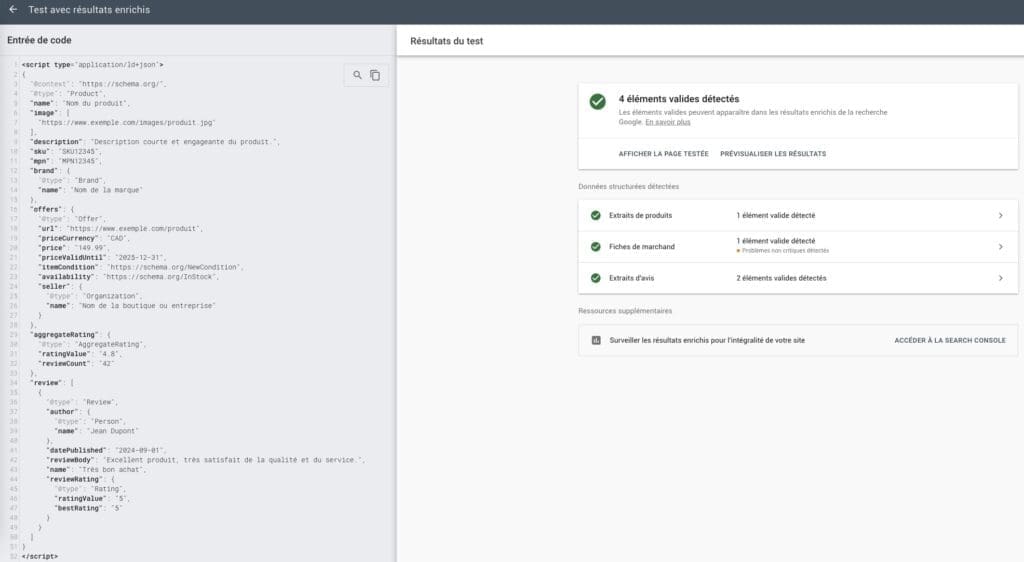
Monitoring with Google Search Console
Google Search Console includes a report dedicated to structured data, accessible via the “Performance” menu and then the “Enhanced Search” tab. This report lists errors by type of enriched result (products, events, FAQ, etc.), facilitating priority correction. For each error, the number of pages affected and specific examples are displayed.
To resolve problems, click on each type of error to access the URLs concerned. Search Console specifically flags incorrect structured data, missing markup or contradictory elements. Once corrections have been made, use the “Request re-examination” option to speed up recognition of improvements. A monthly check is recommended to maintain the quality of enriched results.
Best practices for avoiding penalties
Google prohibits the tagging of content that is not visible to users or is misleading. Structured data must accurately reflect the content of the page. Sanctioned practices include fake reviews, dynamically modified data without updated markup, or different pricing information between content and structured data.
Penalties often occur when a site uses structured data to manipulate search results with non-existent information. Repeated errors can lead to exclusion from enriched results. To avoid these risks, implement only data present on the page, regularly update outdated markup and use tools like Google Markup Helper to generate standards-compliant markup.
| Type of error | Problem | Solution |
|---|---|---|
| Missing element | A mandatory field for the schematic is missing | Add missing element with required properties |
| Incorrect format | Data does not follow required format (e.g. incorrectly formatted date) | Adapt format to schema specifications |
| Non-existent data | Markup mentions content absent from the page | Remove or correct erroneous elements to match visible content |
| Invalid structure | Syntax problem in JSON-LD markup | Use a JSON validator to correct syntax errors |
| Duplicate | Several markups for the same type of enriched result | Keep only one valid tag per enriched result type |
To ensure consistency, regularly check that the structured data matches the visible content. A monthly Schema.org markup audit ensures that markup is relevant and complete. Avoid simultaneous updates to several types of structured data, to make it easier to track modifications and their impact on enriched results.
Tips for standing out from the crowd with Rich Snippets
Analysis of enriched competitive results
Analysis of your competitors’ rich snippet results begins by using tools such as Semrush or Ahrefs to identify the rich snippet formats used by your direct competitors. These tools enable you to visualize the types of structured data used, and evaluate their effectiveness in terms of positions and CTR. To analyze your competitors’ rich results, it’s essential toanalyze this data. To become #1 on Google, it’s essential to analyze this data. This competitive intelligence also reveals opportunities under-exploited by your competitors.
To outperform your competitors, prioritize rich snippet formats that are absent from their strategy. If your competitors use customer reviews but not FAQPages, the latter represent a strategic lever. An audit of the SERPs for your target keywords shows which formats attract the most interaction. Implementing these formats on your site can reduce their advantage and increase your organic visibility.
Targeted enrichment strategies by sector
Recommendations for enrichment vary according to sector of activity. For e-commerce, Product and AggregateRating markups are the priority, displaying prices, availability and customer reviews. Real estate sites prefer LocalBusiness tagging, with addresses, photos and associated services. E-learning platforms optimize Article and HowTo formats to structure their tutorials.
The enrichment strategy is based on the relevance of formats according to sector and search intentions. E-tailers combine Product + FAQPage on product sheets to maximize display surface. Local businesses integrate LocalBusiness + Event for limited-time promotions. News sites use NewsArticle + ImageObject to enhance the visual appeal of their content in the SERPs.
Creating content optimized for rich results
Designing content for rich results starts with identifying the relevant formats (FAQ, HowTo, Product). Structuring content according to the requirements of these formats right from the drafting stage optimizes its eligibility for rich snippets. For example, tutorials follow a HowTo format with numbered steps, facilitating their tagging.
To encourage the display of rich results, structure content with H2 tags for FAQ questions and bulleted lists for steps. Include key elements in visible text (dates, times, prices) to ensure consistency with structured data. E-commerce sites systematically include prices and availability in visible text for Product markup.
The regular updating of structured data follows the rhythm of product or event content. Promotions require frequent updates to Product markup, seasonal events require adjustments to Event markup. Highly competitive content such as recipes or FAQPages benefit from quarterly updates to remain relevant in the SERPs.
An example of successful implementation
Before/after on SERP
Before the implementation of structured data, the site’s presence in SERPs was limited to classic results with title and meta-description. After the addition of JSON-LD markup for products and customer reviews, visibility increased with the display of stars and prices, attracting even more eyeballs.
The case study shows a spectacular evolution on a competitive query. Before tagging, the site occupied 8th position without rich snippet. After optimization, it appeared in the same rank but with a 42% improved click-through rate (CTR), outperforming results without visual enrichment.
Gain in position, clicks and impressions
Data measured over a six-month period reveal an average gain of 2.5 positions in search results following the implementation of structured data. Organic clicks rose by 35%, while impressions increased by 28%, indicating better coverage of queries related to the enriched results.
SEO indicators have improved significantly. Search Console data show a 43% jump in queries with enriched results and an overall click-through rate (CTR) up 26 points. This is due to the visual appeal of starred customer reviews and structured information.
Customer testimonials or hard data
A customer in the interior decorating sector observed a noticeable change six months after implementing enriched results. The CTR of his product sheets increased by 38%, with a conversion rate up by 15%.
Concrete data demonstrate the effectiveness of the implementation. The number of pages with enriched results rose from 12 to 187 in six months, covering 89% of product listings. Queries with starred customer reviews generate 2.3 times more clicks than those without.
Conclusion: enriched results, an essential SEO lever
Rich Results transform a site’s visibility by improving click-through rate (CTR), boosting perceived authority and optimizing compatibility with voice searches. By structuring data via JSON-LD and testing it with Google Rich Results Test, sites gain a strategic advantage on the SERP. These practices, integrated into an overall SEO strategy, help to outperform competitors who often lag behind on this technical lever.
For companies wishing to maximize their online presence, rich results are no longer an option but a necessity. Their implementation, though technical, is simplified by tools such as Google Markup Helper and Schema.org. By aligning structured data with visible content, while following Google Search Console guidelines, every site can capture more qualified and sustainable traffic. The figures speak for themselves: over 60% of sites still neglect these opportunities, leaving room for those ready to seize the leverage.
Need help adding rich results to your site? Contact our Montreal SEO team 🚀 for a customized implementation and support in maintaining your structured data. With proven expertise in JSON-LD markup and compatibility audits, WebPlify transforms your SERP presence to dominate your industry. Taking action today means guaranteed visibility tomorrow.
Enriched results offer an important advantage in improving click-through rates and visibility on Google. By structuring your data with JSON-LD and regularly testing their markup, you maximize your authority. While 60% of sites neglect these tools, acting now puts you in a dominant position, ready to capture qualified, sustainable traffic.
FAQ
How do you manage structured data updates?
For effective management of structured data updates, it is essential to follow Google’s guidelines and regularly validate markup. Google frequently updates its recommendations, so it’s important to keep abreast of the latest developments to ensure correct interpretation by search engines.
The use ofvalidation tools enables syntax errors to be quickly identified. What’s more, Google’s rich results test provides an overview of how pages are displayed in search results, facilitating any necessary adjustments. Automated updates, particularly for product data, are possible thanks to markup on landing pages.
How can I automate the updating of structured data?
Automated updating of structured data can be achieved using automated data extraction tools. These tools leverage OCR, AI and ML algorithms to extract and process data from a variety of sources, ensuring consistent and reliable updating.
For websites, platforms such as Webflow enable dynamic data to be integrated directly into Schema.org markup via dynamic fields. This approach automatically generates structured data from CMS entries, eliminating the need for manual updates. AI also plays a key role in recognizing unstructured data schemas and transforming them into structured data.
How to choose the right type of marker?
Choosing the right type of Schema markup depends onidentifying the type of content on your web page. It’s crucial to select the most appropriate markup for the type of content you wish to promote, and to correctly categorize your content for search engines.
Google recommends the JSON-LD format because it is easier to modify than other formats such as RDFa or microdata. Tools such asGoogle’s markup helper can simplify schema generation, making it easier to implement the appropriate markup.
How do I optimize images for enhanced results?
Optimizing images for rich results involves adding structured data to your page. This helps search engines understand the image content, enabling images, carousels and other non-text elements to be included in rich results.
To optimize images, it is necessary to use schema.org markup, ensuring that the information is relevant to the website’s activity.Google’s rich results test tool allows you to visualize the rendering of information and adjust it if necessary for optimal presentation.








